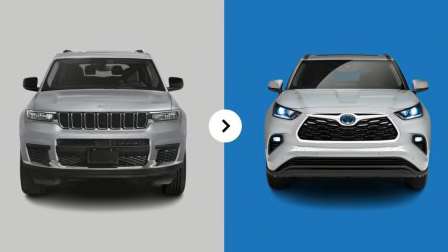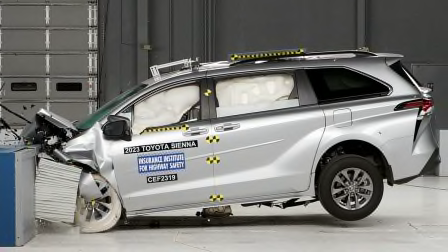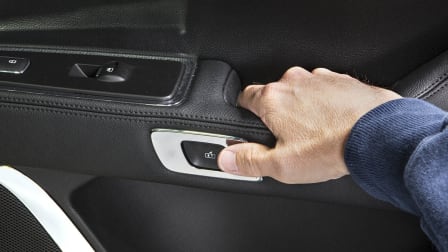Most New Cars Have Safety Technology That Prevents Crashes, Report Shows
Despite those gains, GM and Stellantis still lag in equipping new vehicles with automatic emergency braking technology

More than 12 major automakers equipped nearly all their 2021 vehicles with automatic emergency braking (AEB), a technology that has been proven to reduce crashes and injuries by stopping or slowing a vehicle if a collision is imminent. That number has increased by two automakers since last year, and shows that more manufacturers are on their way to meeting a voluntary commitment to equip nearly all vehicles with AEB by the production year beginning Sept. 1, 2022.
The report comes from Consumer Reports and the Insurance Institute for Highway Safety (IIHS). Overall, the IIHS estimates that if all manufacturers meet the agreement, it could prevent 42,000 crashes and 20,000 injuries by 2025.
Porsche and Jaguar Land Rover are also at the bottom of the pack, although CR does not have data on some 2022 Porsche models, and Jaguar Land Rover has not reported whether all its AEB-equipped vehicles conform to the performance standards set forth in the voluntary agreement. Calvin Kim, a spokesperson for Porsche, told CR that in 2022, sales of Porsche vehicles with standard AEB should account for about 93 percent of vehicles sold based on 2021 sales figures. Jaguar said that its vehicles all currently have AEB, and that they “will meet the test procedures specified by NHTSA, thus meeting the voluntary commitment in line with the required timings.”
To meet the terms of the agreement, automakers must attest that their AEB systems meet certain performance standards. The forward collision warning feature must meet a subset of NHTSA’s current 5-Star Safety Ratings program requirements on the timing of driver alerts. The AEB must earn at least an advanced rating in the IIHS vehicle-to-vehicle front crash prevention evaluation. To earn that rating, the system must slow the vehicle by at least 10 mph in either the 12 or 25 mph test or 5 mph in both of the tests.
Regardless of which brand of vehicle they plan to purchase, car buyers should always check the window sticker to make sure that the vehicle they’re getting comes with AEB. It can be confusing, as different automakers often use different names to refer to the technology.
“Of course the easiest way to assure the car you’re considering has AEB is when it comes standard” says Jennifer Stockburger, director of operations at CR’s Auto Test Center. CR provides a summary of which vehicles have which advanced safety features if you’re unsure.
“If AEB is optional, do your research ahead of time to determine which trim levels or options you may need to get to assure you get it. Buying as much safety as you can afford is a wise investment,” she says.



















